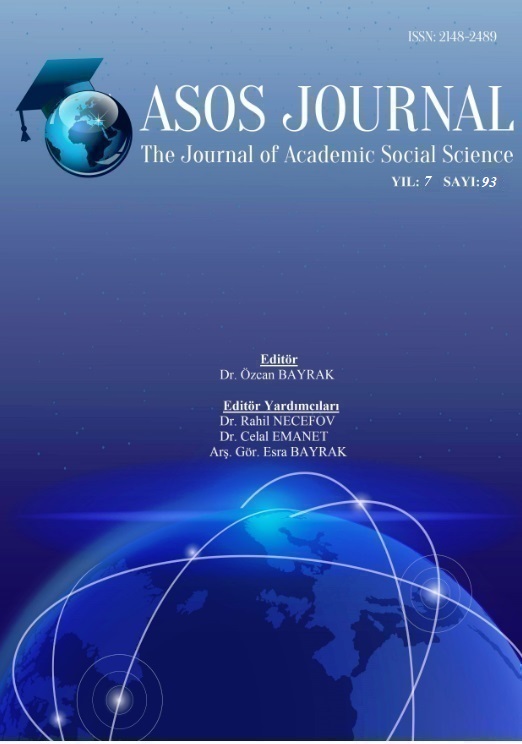KONSERVATUARLAR SAHNE SANATLARI TİYATRO BÖLÜMÜ ŞAN DERSLERİNDE KULLANILAN KİNESTETİK METAFORLARIN ÖĞRENCİLERİN POSTÜR VE SOLUNUMLARINA ETKİSİ
Author :
Abstract
Bu araştırmanın amacı, şan eğitiminde kinestetik metafor kullanımının öğrencilerin postür ve solunumlarını ne ölçüde etkilediğini tespit etmektir. Bu amaç doğrultusunda uygulama Selçuk Üniversitesi Dilek Sabancı Devlet Konservatuarı tiyatro öğrencileri(n=6) ile yürütülmüştür. Öğrencilerin daha önceden bildikleri bir eseri söylemesi istenerek video kaydı oluşturulmuştur(öntest).Video kayıtları 5 uzman kişi tarafından, ses değerlendirme formuna göre öğrencileri değerlendirmişlerdir. Uygulama 12 hafta sürmüştür. Her bir öğrenci ile haftada bir gün 40 dakika çalışılmıştır. Uygulama sonunda öğrencilerden öntestte söyledikleri eseri söylemesi istenerek video kaydı oluşturulmuştur(sontest). Video kayıtları aynı 5 uzman kişi tarafından öğrencileri değerlendirmişlerdir. İstatistiksel analizler IBM SPSS-21 yazılım programı ile yapılmıştır. Parametrik test varsayımlarından olan normal dağılıma uygunluk varsayımı Kolmogorov-Smirnov testi ile varyansların homojenliği varsayımı ise Levene testi ile analiz edilmiştir. Paremetrik test varsayımları sağlanmadığı için bağımlı iki grup için Wilcoxon testi kullanılmıştır. İstatistiksel analizlerde %5 anlamlılık seviyesi kullanılmıştır. Güvenirlik analizi için Cronbach alfa değerlerini bakılmıştır. Araştırma sonunda, öğrencilerin sontest puanlarında öntest puanlarına göre anlamlı derecede artış olduğu gözlemlenmiştir.
Keywords
Abstract
The aim of this study is to determine how the use of kinesthetic metaphor in the teaching of singing affects the posture and respiration of students. For this purpose, the application was carried out by Selcuk University Dilek Sabancı State Conservatory theater students (n = 6). The students were asked to sing a work they already knew and a video recording was made. The video recordings were evaluated by 5 experts according to the voice evaluation form. The application lasted 12 weeks. 40 minutes per week were worked with each student. At the end of the application, the students were asked to tell the work they said in the pre-test and a video recording was created (post-test). Video recordings were evaluated by the same 5 experts. Statistical analysis was performed using the IBM SPSS-21 software program. The hypothesis of conformity to normal distribution, which is one of the parametric test assumptions, was analyzed with the Levene test and the Kolmogorov-Smirnov test and the homogeneity of variances. Wilcoxon test was used for the dependent two groups as the parametric test assumptions were not provided. 5% significance level was used in statistical analysis. Cronbach's alpha values were analyzed for reliability analysis. At the end of the research, it was observed that the posttest scores of the students increased significantly compared to the pre-test scores.
